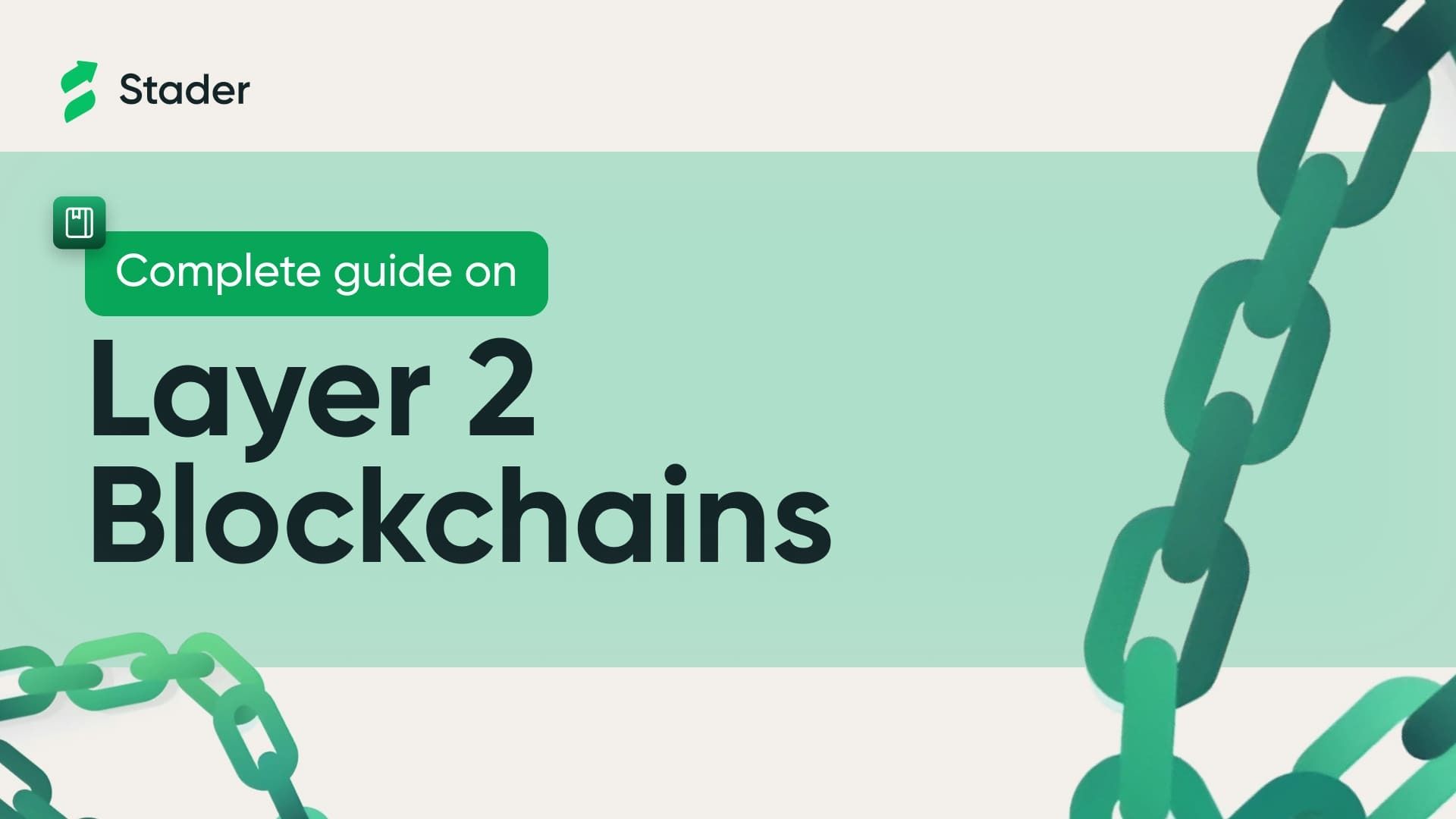What is a Layer-2 Blockchain?

A Layer-2 blockchain is a blockchain that sits on top of a Layer-1 blockchain. It is designed to improve the scalability, performance, and efficiency of the Layer-1 blockchain. Layer-1 blockchains are often limited in terms of their scalability and performance for which Layer-2 solutions work in order to offload some of the burden from the Layer-1 blockchain to the Layer-2 blockchain.
Also Read: Blockchain Components
How Layer-2 Solutions Work?
Layer-2 solutions work by taking some of the processing and data storage burden from the Layer-1 blockchain to the Layer-2 blockchain. It can be done in a number of ways, such as by using sidechains, state channels, or payment channels. Layer-2 solutions are very important for Layer-1 blockchains to function as the L-1 blockchains are often limited in terms of their scalability and performance. For example, the Bitcoin blockchain can only process about 7 transactions per second, while the Ethereum blockchain can only process about 15 transactions per second which could be a big limitation for the L1 solutions.
Also Read: Type of Blockchains
What is Layer 2 Scaling?
Layer 2 scaling refers to the process of increasing the scalability of a blockchain by using Layer-2 solutions. This can be done by increasing the number of transactions that can be processed per second, or by reducing the amount of data that needs to be stored on the Layer-1 blockchain.
Layer 2 vs Layer 0?
Layer 0 refers to the base layer of a blockchain responsible for the consensus and the security of the network. Layer 2 refers to the additional layers that are built on top of the base layer to improve its scalability, performance, and efficiency.
Also Read: Ethereum Bridge
What are Types of Layer 2 Scaling Solutions
There are a number of different types of Layer-2 scaling solutions, including:
- Sidechains: Sidechains are separate blockchains connected to the Layer-1 blockchain. Sidechains are used to process transactions off-chain, which improves the scalability of the Layer-1 blockchain.
- ZK rollups: Zero-knowledge rollups (ZK rollups) are a type of layer-2 scaling solution that bundles transactions together to be executed off-chain. This greatly reduces the amount of data that needs to be posted on-chain, which can improve throughput and reduce costs.ZK rollups use a cryptographic technique called zero-knowledge proofs to prove that the off-chain transactions are valid without revealing any of the underlying data. This makes ZK rollups a very secure and privacy-preserving scaling solution.
- Optimistic rollups: Optimistic rollups are a layer-2 scaling solution that helps to improve the scalability of Ethereum by moving computation and state storage off-chain. This means that transactions are processed off-chain, which reduces the load on the Ethereum mainnet.
Also Read: What Is Polygon Zkevm
- State channels: State channels are used to facilitate off-chain transactions between users and the Layer-1 blockchains. These are used to reduce the amount of data that needs to be stored on the Layer-1 blockchain.
- Payment channels: Payment channels are a way to facilitate off-chain payments between two parties. They can be used to reduce the number of transactions that need to be processed on the Layer-1 blockchain.
Also Read: Ethereum Virtual Machine
Pros & Cons to Layer 2 Scaling
There are a number of pros and cons to Layer-2 scaling, including:
Pros:
- Layer-2 solutions improves the scalability, performance, and efficiency of blockchains.
- They can be used to reduce the cost of transactions.
- They can be used to improve the security of blockchains.
Cons:
- Layer-2 solutions can be complex to implement and use.
- They can introduce new security risks and potential data breaches.
- They can be centralized, which can reduce their decentralization benefits.
Examples of common Layer-2 blockchain:
Some of the most common Layer-2 blockchains include:
- Lightning Network: The Lightning Network is a Layer-2 scaling solution for Bitcoin. Lightning Network uses payment channels to facilitate off-chain payments.
- Polygon zkevm: Matic Network is a Layer-2 scaling solution for Ethereum. It uses Plasma to create sidechains that are connected to the Layer-1 blockchain.
Conclusion
Layer-2 blockchains are a promising way to improve the scalability, performance, and efficiency of blockchains. They are still under development, however they do have the potential to make blockchain technology more widely adopted and easier to use.
Also Read: Liquid Staking Derivatives
Frequently Asked Questions (FAQs)
Q) What are the Differences Between Layer 2 and Layer 1?
Ans) Layer 1 blockchains are the base layer of a blockchain network. They are responsible for consensus and security. Layer 2 blockchains are built on top of Layer 1 blockchains to improve their scalability, performance, and efficiency.
Q) What are Rollups?
Ans) Rollups are L-2 scaling solutions that batches transactions together and execute them off-chain. The results are then submitted to the Layer 1 blockchain as a single transaction. This can significantly improve the scalability of the Layer 1 blockchain.
Q) Why is there no 'official' Ethereum L2?
Ans) There is no "official" Ethereum L2 because Ethereum is an open-source project and anyone can create a Layer 2 solution for it. However, some of the L-2 solutions are more popular than others.
Q) What is the difference between optimistic and zero-knowledge rollups?
Ans) Optimistic rollups use fraud proofs to ensure the validity of transactions, whereas zkRollups use zero-knowledge proofs. Fraud proofs are easier to verify than zero-knowledge proofs, but they are also not as secure as zkRollups. zkRollups are more secure than optimistic rollups, but they are also more complex to implement.
Popular Searches
Flash Loan Attack | What Is Dex | Types Of Blockchain | Blockchain Nodes | Polygon Staking | BNB Auto Burn | CEX Vs DEX | ERC-6551 | Liquid Staking Vs Staking | Yield Farming Vs. Staking | How To Add Binance Smart Chain To Metamask | ERC-1155 | Liquid Staking Derivatives | Proof Of Work Vs Proof Of Stake | Smart Contracts | What Is Liquid Staking | What Is Validator | Liquidity Crypto | Ethereum Staking | Ethx Vs Solo-Staking